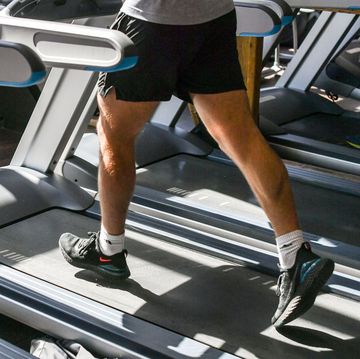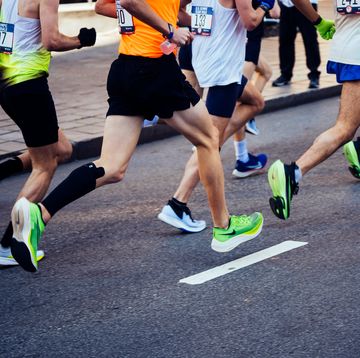It’s no secret that recovering well after a workout helps you to become a faster, stronger and less injury-prone runner. When we first think of recovery, we might picture kicking back and putting our feet up after a hard effort, allowing our bodies to rest and recuperate. As relaxing as this sounds, research suggests that keeping active between higher-intensity efforts can actually optimise recovery and improve running performance.
So what exactly is active recovery? And how can you successfully implement it into your training routine? Here’s what you need to know.
What is active recovery?
Active recovery involves engaging in low-intensity exercise on the days following a challenging or strenuous workout.
What everyone's reading
The main aim of these workouts is to increase blood flow to your fatigued muscles. This blood delivers oxygen and much-needed nutrients, like amino acids, that help to repair damaged muscle fibres. Importantly, these workouts are not meant to put excessive strain on your body – active recovery, therefore, means choosing low-impact activities at a light effort.
What are the benefits of active recovery?
Research has shown that active recovery offers numerous physical benefits. Incorporating it into your routine can: reduce muscle stiffness and the impact of DOMS (delayed onset muscle soreness)- improve circulation; increase your body’s ability to clear lactic acid build-up; help to reduce inflammation; and improve athletic performance.
Active recovery can also be great for your mind, allowing you to enjoy exercise-induced endorphin hits without putting yourself under the mental stress of hitting paces or distance goals. Since active recovery relies on low-intensity, comfortable efforts, it’s a great opportunity to exercise with a friend – adding a social element to your weekly routine.
What are some of the best active recovery options?
The most accessible and inexpensive active recovery options include walking and slow-paced jogging, which is another term for a recovery run. This gentle exercise helps to clear metabolic waste, improve circulation and promote muscle repair without putting the body under further strain.
Swimming and cycling are also excellent, low-impact ways to get the blood pumping and recover actively. In fact, one study published in the International Journal of Sports Medicine found that recovery through swimming boosted running performance, which they attributed to its ability to reduce inflammation.
To improve flexibility, you could give yoga or tai chi a go. These more meditative practices offer both psychological and physical relief. Research has found that yoga is effective in enhancing flexibility, physical strength and psychological pain management. The practice has also been found to improve sleep quality, enhancing the effectiveness of your passive recovery.
What is passive recovery?
Passive recovery is all about letting the body fully relax and repair with minimal physical exertion. This type of recovery plays an important role in recovering from injuries and illness. Taking full rest days is also important if you’re experiencing the symptoms of overtraining: prolonged general fatigue; deteriorating performance; an elevated resting heart rate; sleep disturbances; and increased susceptibility to injury and illness.
Additionally, those who are new to running are often better off relying more heavily on passive recovery to ensure that their training loads are not increasing too quickly, which can lead to overtraining and injury.
When is active recovery better than passive recovery?
Active recovery works most effectively in the days following a high-intensity effort. So, these sessions are best completed after a long run or a demanding speed workout.
If you’re feeling sore from an intense effort but are otherwise fit and healthy, you will benefit more from active recovery than passive recovery. In the long term, incorporating low-intensity cardio into your regular running routine will help you to strengthen your cardiovascular system and build greater endurance adaptations.
What are some mistakes when it comes to active recovery?
For all the benefits of active recovery, it can still be problematic if you get it wrong. One of the most common mistakes in active recovery is pushing too hard – turning a restorative workout into one that requires further recovery. This often occurs among runners who are new to active recovery and accustomed to pushing themselves hard in every workout.
The National Academy of Sports Medicine advises that you keep your heart rate between 30-60% of its maximum during active recovery. If you do not have a heart rate monitor, you can also do the talk test – for easy, low-intensity efforts, you should be able to carry a conversation with minimal difficulty.
Overexerting yourself during these training sessions turns an easy swim or recovery run into another intense workout, which hinders rather than aids recovery. In the long term, this can cause an increased risk of injuries like stress fractures or shin splints.
Along this line, another crucial – but all too common – mistake is ignoring pain or worsening fatigue during recovery efforts. If you experience any sharp or intense pain, you should dial back your effort, or stop altogether, to ensure that you don’t end up causing injury.













